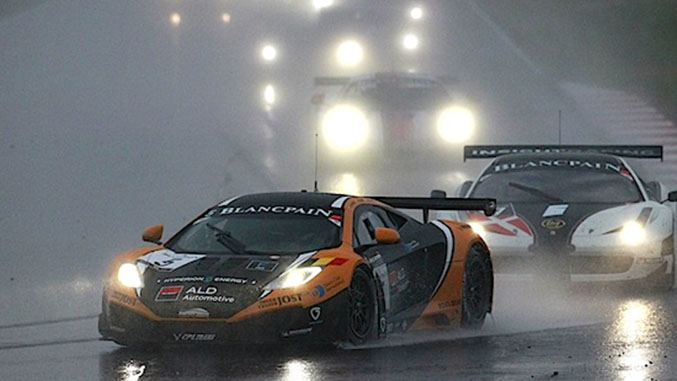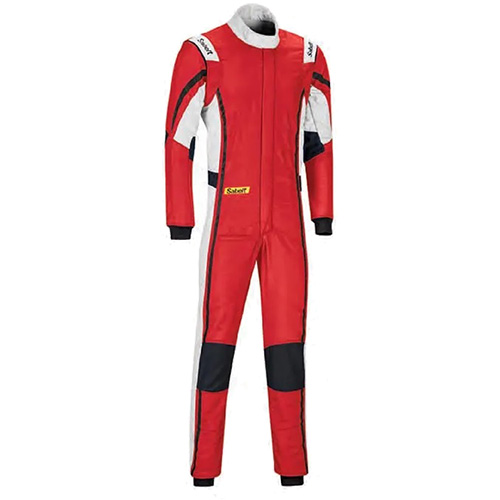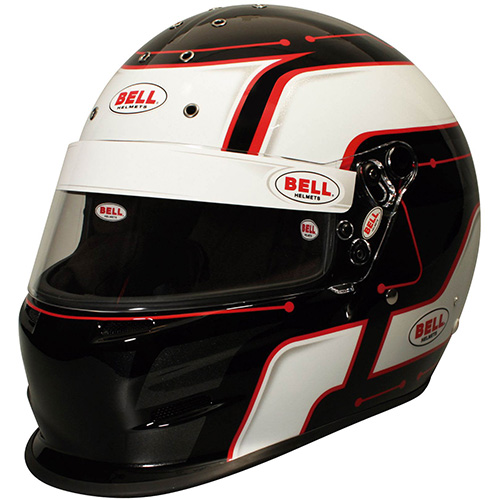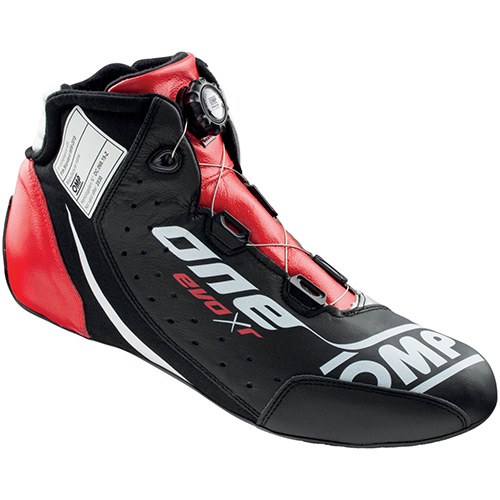Five Strategies For Finding the Limit

Fear is a topic that most drivers prefer not to talk about. Why? Perhaps it's because they don't want to admit to or show a weakness. Perhaps it's because they don't understand it – specifically where that line is between self-preservation and fear. James Colborn is not afraid to tackle the topic this week, and I'm sure he'll get you thinking. You'll possibly come to your own conclusions about where your personal limit is.
If someone asked me to define my driving – with a positive focus I might add, as I think we're all very self-critical in racing – I would say that I am a smooth and consistent driver. I am not overly busy at the wheel; I'm not having to correct my driving constantly; and in many instances, it means I can deliver consistent lap times again and again. Combine this with reasonably good finishes and it translates into me having fun at the track and leaving happy, often with a trophy or plaque. So, what's wrong with this type of driving?
The major problem with this driving style is that it second-guesses a major component in racing; am I finding the limit and how much speed am I leaving on the table?
The answer to these are relatively simple, and they are things that I think secretly plague a lot of drivers, especially those in club racing. I personally believe it is a fundamental differentiator in drivers. It's courage. The statement "what is the worst that could happen?" is something that drivers approach with varying levels of comfort.
Driving pushes our courage buttons in many ways. For some, it's close-proximity racing that creates an overwhelming sense of fear and something to shy away from. Others have anxiety over the financial consequences of racing and "driving with their pocket book" often rings true. There is some fear of being tagged, hit, or touched on track. Street driving indoctrinates us with the thought that ANY contact is bad. Truth be told, any contact is usually bad, especially if you strive for clean and safe racing, however, let's not confuse things. Contact on track for many drivers isn't about avoiding a trip to see the stewards. It's the belief that contact equals crashing and crashing at race speeds is really frightening.
My personal challenge is different. Having raced for a while, I've had my fair share of taps and off-track incidents and I'm just not smart enough at speed to calculate the cost of what might get broken when I'm three-wide, going into a hairpin turn. My issue has always been – in varying degrees of severity – the fear of the car careening off track if I brake too late or if I get on the gas too soon, resulting in me losing control, finding the limit of the car, and… I crash. Yes, I, too, am frightened of crashing and getting hurt.
Over the past four years, I've worked on a series of ways to get comfortable with this and work on the courage aspect of racing cars at speed. This truly is a sport where you have to be comfortable with being uncomfortable, so I wanted to share a few of my personal insights about overcoming the anxiety racing brings and how to look for improvement. They are as follows:
- Coaching. I can't speak highly enough about how much this helps. A coach will push your comfort with being uncomfortable. A few months ago, I was coached by Seth Thomas (BimmerWorld pro driver) at LimeRockPark. At one point late in our session, when I'd already found more time than I thought possible, Seth says "same speed on entry, no brakes into this corner!" I gulped, clenched and trusted Seth to try it. The understeer slowed the car enough to make the corner and the predictive timer jumped. My brain would NEVER have said go in there with no brakes. I think you get my point why coaching is so important!
- Data. Whether it's from working with a pro to working with friends and fellow racers, data is great at helping you understand what is possible. Doesn't matter if that fellow racer has the same speed or is slower or faster than you are, there is always something to learn. Even on the most simple of data acquisition systems, you can see deceleration and acceleration. If you are struggling to find a braking point and you see on a graph that someone can go deeper, two things happen: a) they are standing next to you, so chances are they also made the corner and b) you can ask them how they approach it. Data can help you figure out the question (that some of us ask ourselves regularly): "How are they doing that, there?"
- Mapping The Track (and finding experimental zones). What does this mean? When I go to a track, I look at each corner, usually on a track walk or first few laps of the track in the car. Which corners have tons of run off in the braking zone, which corners are very wide, which corners have lots of room on exit? Once I've found these corners, I can push a little harder to find the car's limit. As an example, Turn Six at Portland International Raceway is wide, not particularly fast, and has a football field of run-off at track-out. This is a corner you can really experiment on the levels of grip and get used to the car. For me, it's not about understanding just that corner, as much as understanding the car's behavior. Once I get comfortable with how the car will behave, I can apply that elsewhere on the same track, and then start to understand how the car is handling.
- Rain. If you get a chance to drive in the rain…do it! I race three-quarters of my weekends in the Pacific Northwest. In the past couple of years, we've seen more rain races than dry and it has really helped my comfort with the car moving around constantly. The rain will allow you to find the limit of the car at slower speeds and will build your confidence and comfort levels for more rain sessions or later dry sessions.
- Notes. Take notes from the last time you were at any track for the next time you get there. Also keep your data sessions and anything that you found to be of particular note. I use OneNote from Microsoft and keep a record of every race weekend I do. By referring to my notes, I can prepare myself for where I am going to need extra courage or conviction, then use data (usually my own sessions) to tell myself that I got there and was able to do what plagued me that previous weekend. Nothing more motivating than knowing you've already figured out what you are often most concerned about on track.
For some people, these insights will seem rudimentary and basic, but I hope they are useful to others. If you want to evolve your own driving, you have to push the limits of your own comfort and the limit of the car simultaneously. Has this gotten better for me over the past four years? Yes, without doubt! But two factors really impact my personal "racing" comfort. The first is time. Unless I'm in the car constantly (for example, at time of writing, I've had a two-month gap in racing) my courage's memory seems to fade and it takes a little while to come back. Secondly, I keep putting myself in situations where the competition gets harder or the challenge increases, and so the comfort level increases. If I find myself in a Continental Tire Series race with a car I've hardly driven on a track I've not been to before with sixty pro drivers around, my comfort level is distinctly unpleasant!
At the end of the day, the worst of the phrase "what is the worst that could happen" changes with experience, however, I believe the steps above will really help you address concerns and come out the other side a faster driver with more confidence. Even if it's just a little bit!
– James Colborn
Website: jamescolborn.com
Exerpted from Ross Bentley’s Speed Secrets Weekly. For more tips and additional articles on the art and science of racing, click here to subscribe.
Also be sure to check out Ross Bentley's book, Ultimate Speed Secrets: The Complete Guide to High-Performance and Race Driving.


















